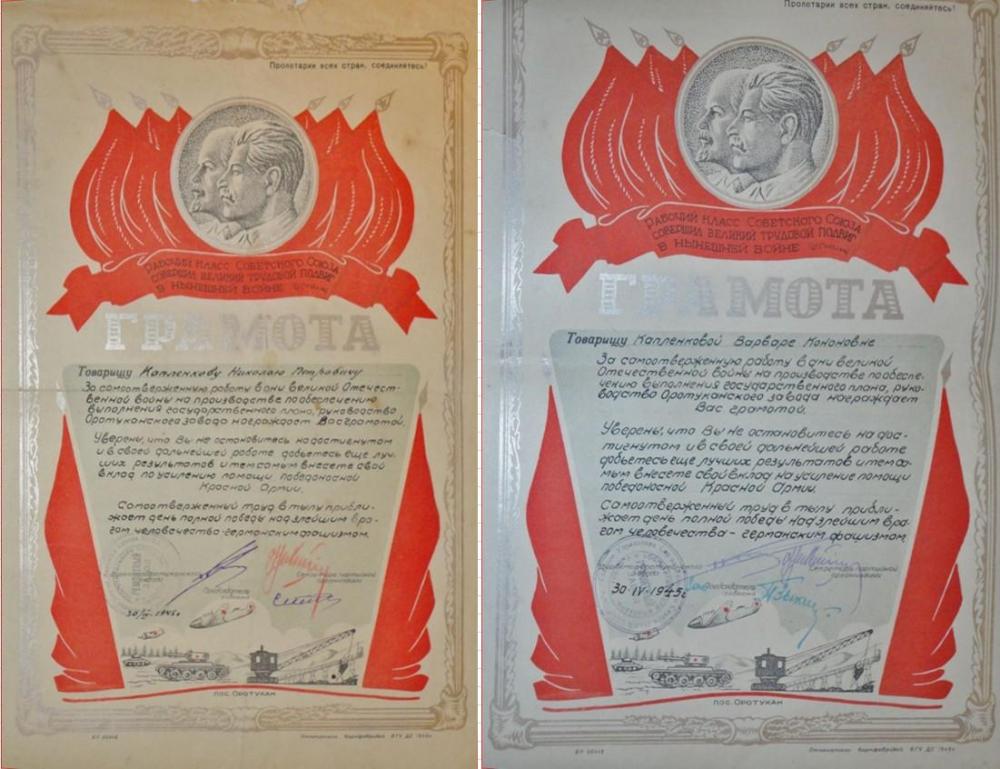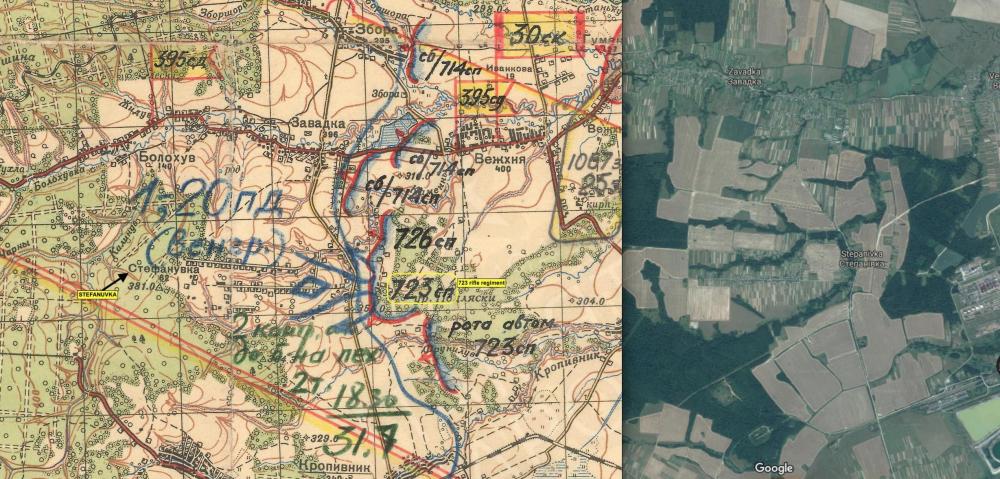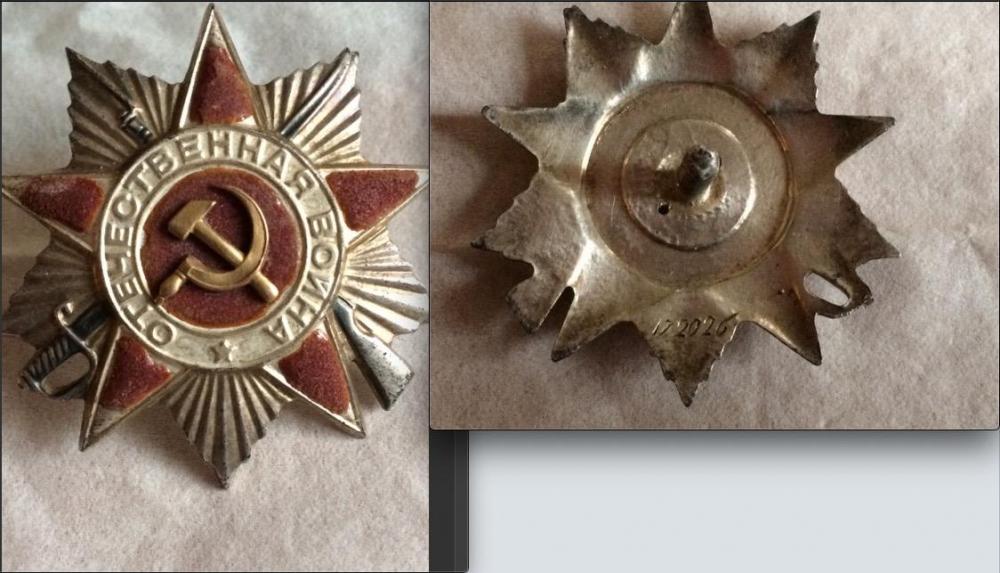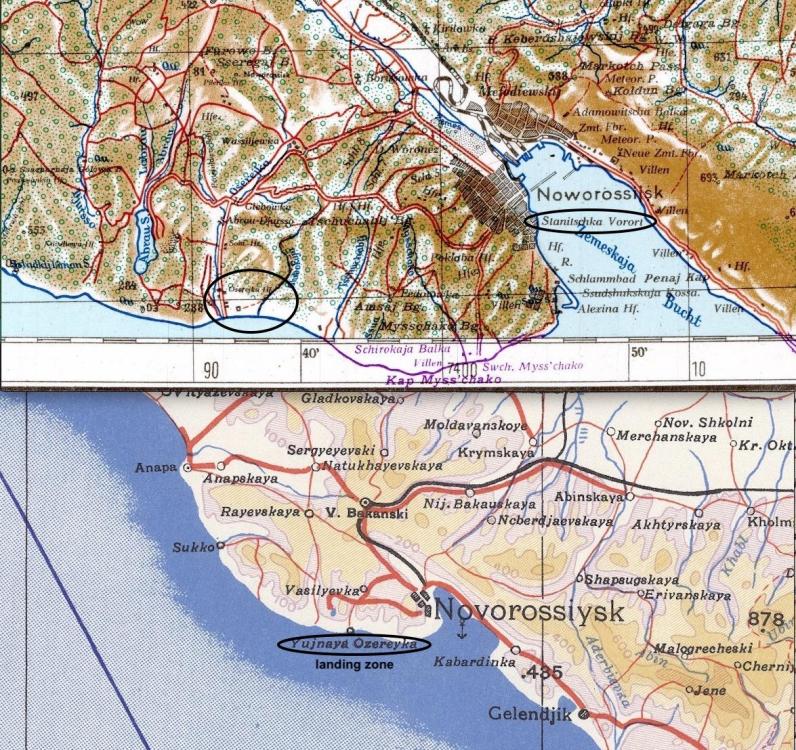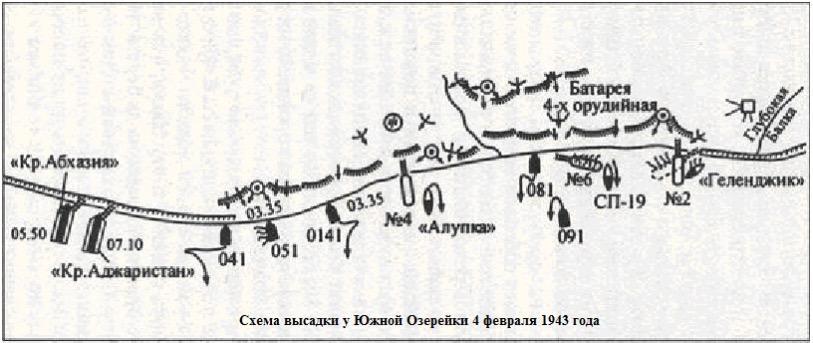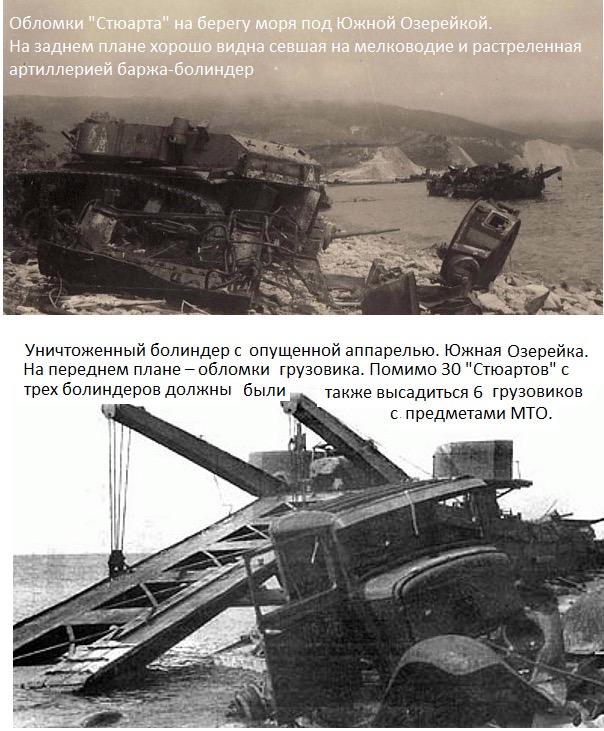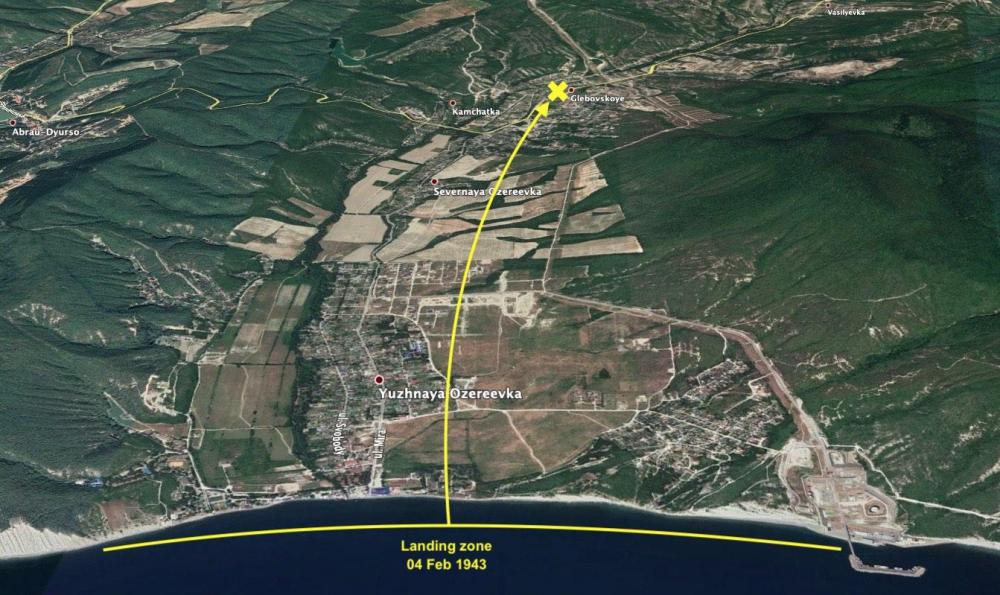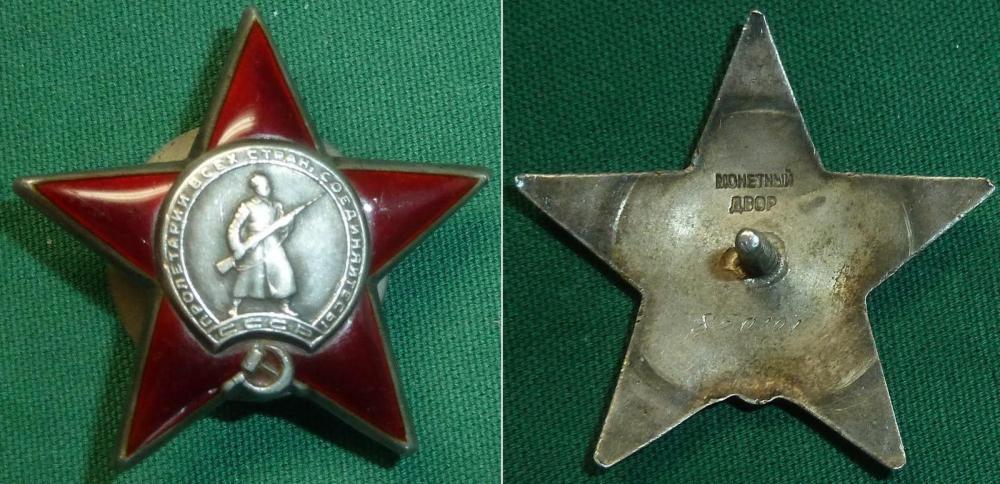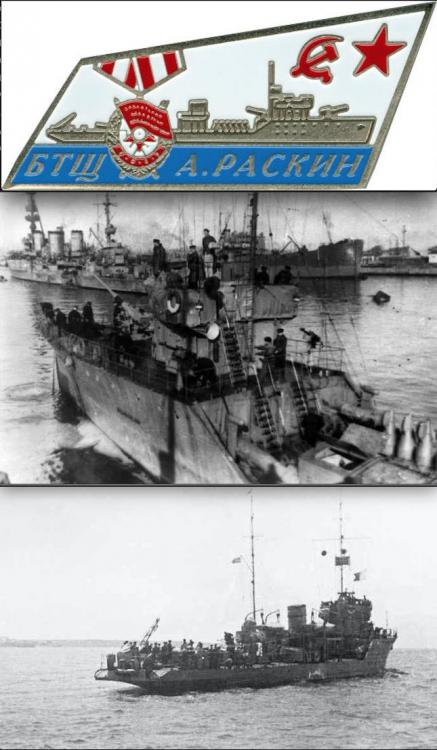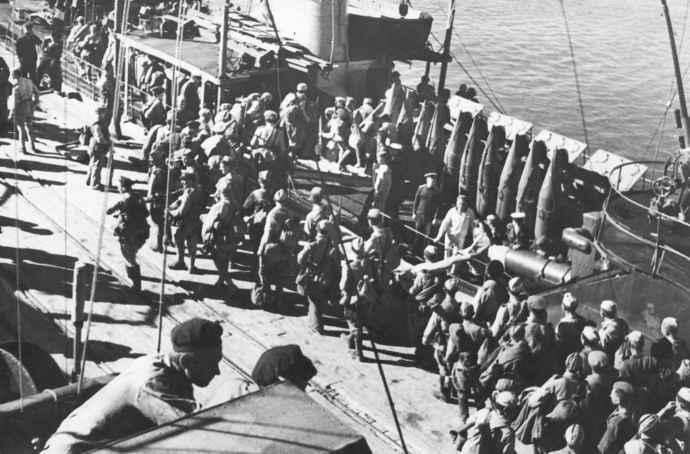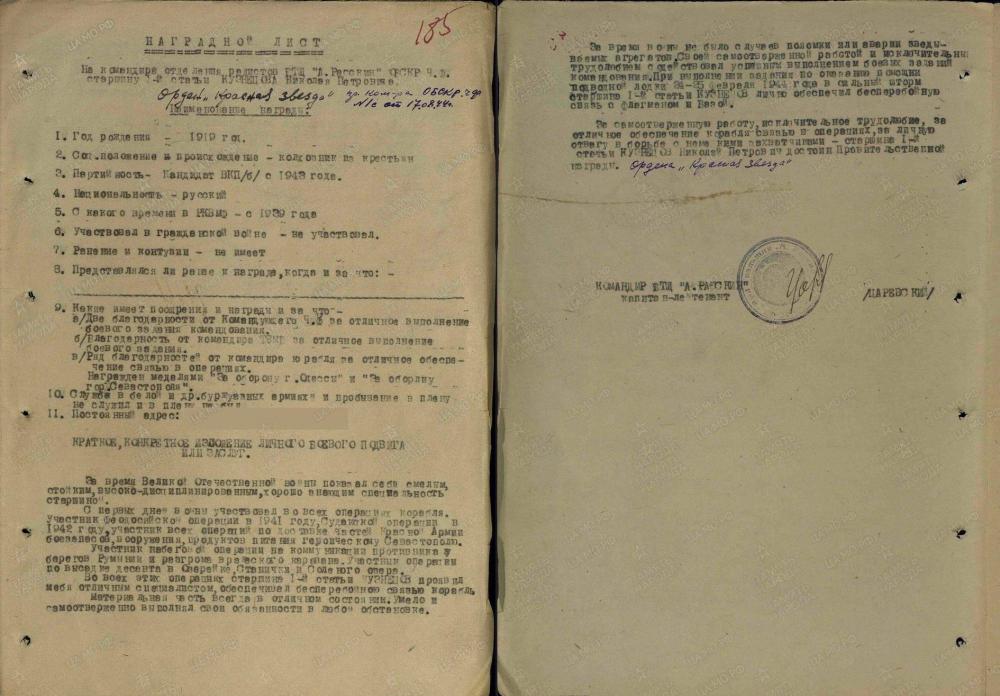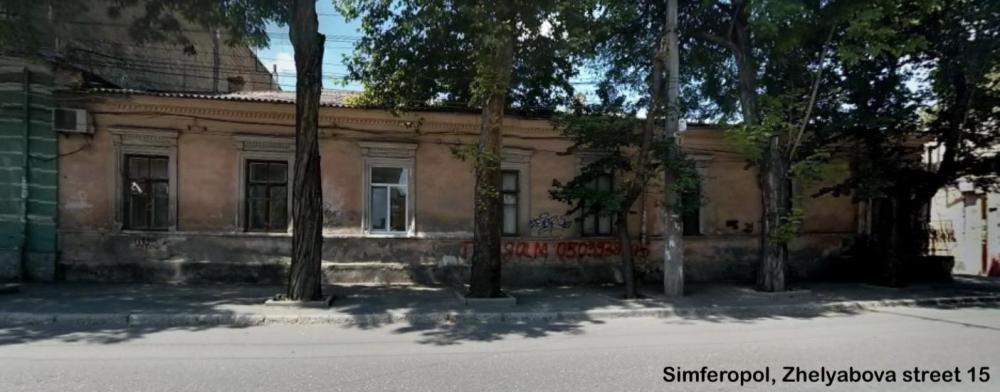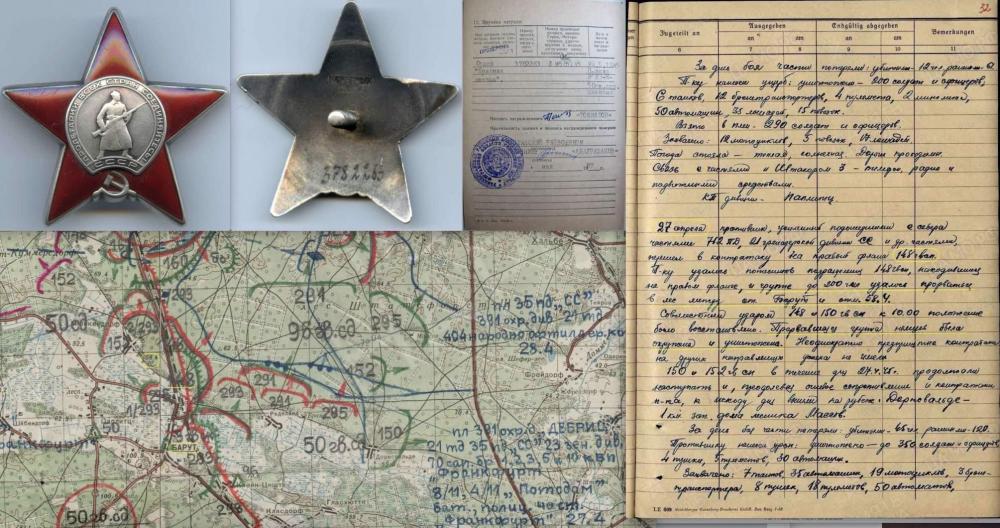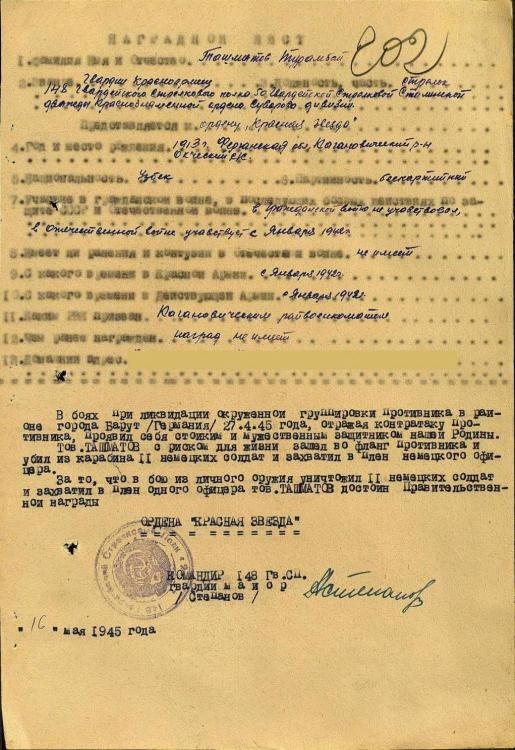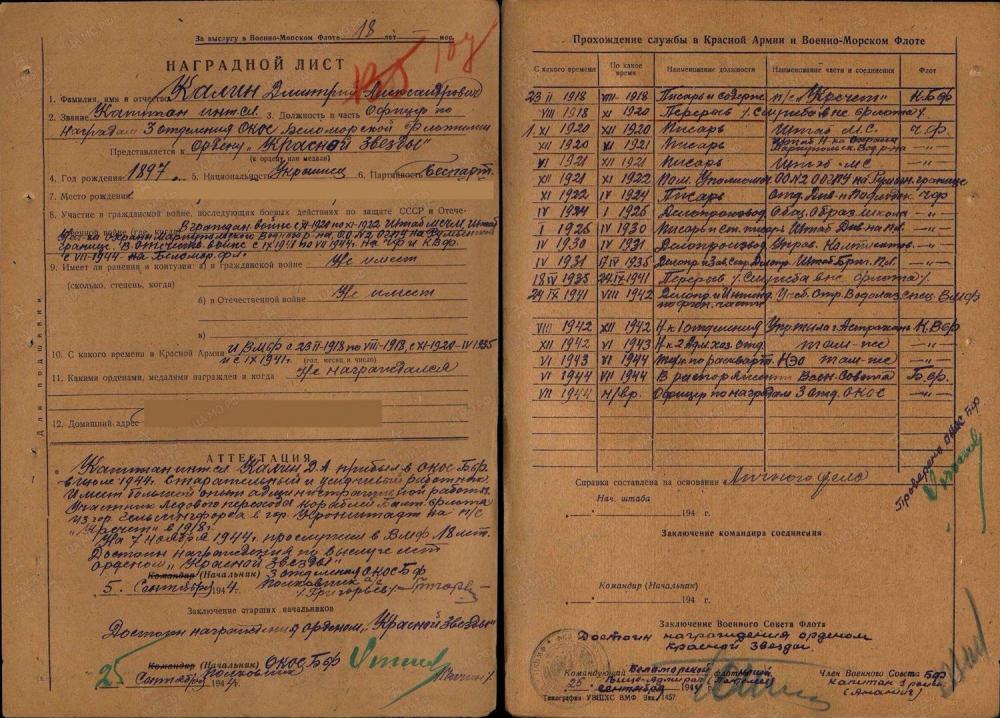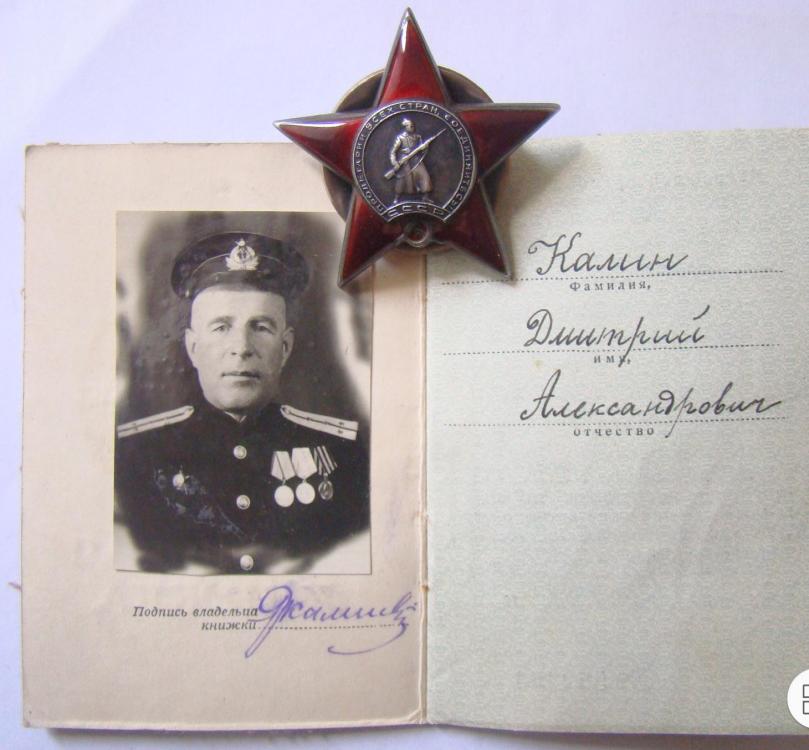-
Posts
496 -
Joined
-
Last visited
Content Type
Profiles
Forums
Blogs
Gallery
Events
Store
Everything posted by Egorka
-
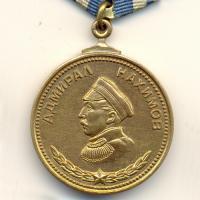
Maternity group completed
Egorka replied to Raven's topic in Russia: Soviet Orders, Medals & Decorations
You will be a good mom! Congrats! -
It would help if the scans were sharper... The recipient is a man with surname CHUGUNKOV A.I. (the way you wrote the surname whould mean that was a woman). He worked as a loader, i.e. the guy whose tasks was to move heavy loads (the word "lumberjack" is stricken out and "loader" is written on top). I believe, CHUGUNKOV was indeed an inmate or former inmate in the correctional facility. The facility was located at or near settlement Sos'va in Sverdlovsk region and was mainly lumber cutting and transportation.
-
I am glad to help! The scan of this document is not that sharp... But it looks like the recipient is a woman - CHUMKOVA T.S. Grammatical surname spelling implies that the recipient is a woman (ЧУМКОВУ Т.С.). If it was a man, this would read ЧУМКОВА Т.С. п/я УЕ-394/1З п/я - почтовый ящик - post box. This was also a notation used, when the name of organization was no used in open communication. УЕ-394/1З - this is code for the correctional facility. Today its called ФКУ ИК №13. http://www.list-org.com/company/930716/map
-
These are two exactly the same gramotas issued on the same date, 30 April 1945, to two people - man and wife. The man was mechanical engineer at Orutukan plant. The woman also worked at the plant. These two are exactly the same as yours, with exactly the same text. I believe, KUDRIAVTSEV was a colleague of this couple - a civilian engineer or a worker.
-
That is right, but it doesn’t indicate directly, that this particular man was in NKVD service. Not only GULAG inmates lived and worked in the area, hence this man could had been a so called “freely employed”. There is no rank. The paper itself was signed by the Head of labour union and the Head of the local Com. party organisation. I cannot quite clearly see the stamp, but doesn’t look like it supports NKVD theory either.
-
Hello and thank you for sharing! Why do you think the recipient was in NKVD? I don't really see any direct indication of that.
-

Order of Red Star with the Order Booklet
Egorka replied to nickstrenk's topic in Russia: Soviet Orders, Medals & Decorations
Good one, Nick! Here is one of the actions described in the citation. When rifle battalion commander Lt. IVASHKO replaced wounded company commander on 31 July 1944 in the engagement near village Stefanivka. The citation and the map describe 2 attacks by 1 and 20 Hungarian infantry divisions supported by 2 tanks, which took place at 18:30. -

Wearing other state orders, Chinese Empire officials
Egorka replied to 1812 Overture's topic in China
We can all learn from this thread!!! I have! I think, I will use the same approach too. Or is it copy-righted? In that case I will do the same out of spite. -

Wearing other state orders, Chinese Empire officials
Egorka replied to 1812 Overture's topic in China
Thank you very much for sharing! Very impressive and educational! -

Posthumous OPW2 - defaced order
Egorka replied to redoctober's topic in Russia: Soviet Orders, Medals & Decorations
Note, that the sabre handle and the rifle butt were also removed. I think someone as trying to make a generic silver star out the order. -

OPWII #172026 lost and found
Egorka replied to Egorka's topic in Russia: Soviet Orders, Medals & Decorations
Good eye! You almost gave me a heart attack. And rightfully so. The averse photo appears to be NOT of the piece I have. I reused the photo from the seller, who must have mixed them up. I will need to make averse photo of my object and post it here. -

Soviet Cool Navy Award-You read. : D
Egorka replied to Aurelius's topic in Russia: Soviet Orders, Medals & Decorations
Well... about 65Gb of data. Not much, as it's been estimated that the Internet weighs about the same as a medium-sized egg (50g). ? Example of the information in the protocol: ORB # 114821 being awarded to Petty Officer 2st Class PROKAZOV, Baltic Fleet. ( http://gmic.co.uk/topic/74228-boris-prokozov/?tab=comments#comment-673823 ) -

OPWII #172026 lost and found
Egorka replied to Egorka's topic in Russia: Soviet Orders, Medals & Decorations
Yes,It think this is the same one. The hammer and sickle is indeed fell victim of the "restoration"... Plus, due to thermal impact in replacing enamel the surface got new artefacts. But I believe it is the same badge. What do you think? -

Soviet Cool Navy Award-You read. : D
Egorka replied to Aurelius's topic in Russia: Soviet Orders, Medals & Decorations
Linking a serial number to a name and unit is also possible with award handout protocols. I have the Navy protocol document set at my disposal. It covers almost all the Marine awards and the recipient names. With some extra online effort, this allows identification of by far most of the Navy numbered awards. -

OPWII #172026 lost and found
Egorka replied to Egorka's topic in Russia: Soviet Orders, Medals & Decorations
Paul, that is the same order. First how it looked dug up and later when enamel restored. I would have kept it as it was. But the traders though to get more money that way... Money makes this world go round... Shame... But I was grabbed by the story and decided, that this unfortunate restoration should not be an obstacle for me. -

My new Soviet medals
Egorka replied to usairforce's topic in Russia: Soviet Orders, Medals & Decorations
The awards marked "БУТАФОРИЯ" were produced for theatres and movie production. -
Some comments on the operation mentioned in the citation. "landing operations at Ozereika, Stanichka" were the landing operations taking place 3-9 February 1943. Their objectives were to capture and expand bridge head and subsequently encircling the German forces in the port town Novorossiysk. Ozereika was the primary landing zone. Stanichka was a diversion action. But the event didn't envelop according to the plan. A number of mishaps happened so, that the main landing force was redirected to Stanichka and landed there. Later the expanded bridge head was held for 225 days. It's name was coined by Leonid BREZHNEV as "Malaya Zemlya" - "Minor Land". But during the war it was rather called "Cape Myskhako landing". The minesweeper T-412 "Areseny Rasskin" was assigned to the ill-fated Ozereika landing detachment. It towed the floating barge #6 carrying troops and a number of Stuart tanks. Several times the tow rope was broke due to stormy weather and fixing time caused T-412 minesweeper to be delayed. As the result it came later to the landing zone. The barges were towed to the shore by small tow boat, not minesweepers. The barge #6 reached the shore under heavy fire at 05:50 and landing commenced immediately. Soon after the barge, like two other landing pages were set ablaze and destroyed. Then among other many mishaps of the operation, maybe the worst, happened. The landing force commander reported that the landing failed and order retreat. This is despite the fact that some landed unit had certain success and needed reinforcement. Instead, trying to avoid further losses, the commander ordered retreat. The mistake was caused lack of communication with the landing force and poor visibility. The remained troops of the second landing wave were redirected to the Stanichka zone instead. The minesweeper "Areseny Rasskin" transported reinforcements (165 rifle brigade) to Stanichka on 6 February. The troops at Ozereika had initially won the landing egangement and manage to advance 4km into the land, but without resupplies and communication were overcome by the German-Rumanian reinforcements. Landing zones location: Ozereika landing zone: The aftermath.. .
-
-
So great of a read! Thank you very much for sharing!
-
A nice little catch - Red Star warded to radio section leader of minesweeper "Areseny Rasskin", Balck sea fleetю Master Sergeant I class KUZNETSOV NIKOLAY PETROVICH, 1919. Citation is written 18 August 1944. It is nicely depicts the operational history of the minesweeper T-412 "Areseny Rasskin": "During the Great Patriotic war, he proved himself as courageous, steadfast, highly disciplined, and technically skilful master sergeant. He took part in all missions of the ship since the first days of the war. Participated in Feodosia operation in 1941 and Sudak operation in 1942. Participated in all the missions for resupplying Soviet Army unit with arms and provision in heroic Sevastopol. Participated in the skirmish operations at Rumanian coast and destruction of the enemy convoy. Participant of the landing operations at Ozereika, Stanichka, and Solenoe lake. In all these engagements, master sergeant I class KUZNETSOV proved himself as excellent specialist and provided the ship with uninterrupted communication channel. His hardware equipment is always in excellent shape. He skillfully and selflessly performed his duty under any circumstances. There has been no failures of the equipment under his supervision during the period of the war. With his selfless and exceptionally hard work, he aided successful fulfilment of the combat objectives given by the Command. During the submarine rescue mission on 24-25 February 1944, in heavy storm, master sergeant I class KUZTNETSOV personally provided uninterrupted communication to the flagship and the home base. For selfless and exceptionally hard work, for providing excellent communication to the ship during combat operations, for personal courage in the struggle against the German invaders, master sergeant I class KUZNETSOV is worthy of "Red Star" order." Some photos of the minesweeper T-412 "Areseny Rasskin"
-

Soviet Soviet fieldpost letter
Egorka replied to Hauptmann's topic in Russia: Soviet: Other Militaria
An interesting extension to my collection and excellent letter linked to the pilot Vsevolod RASPOPOV, who was shot down over Crimea and captured by Germans. See posts #11 of this thread. This is one is addressed to RASPOPOV's father, Yuri Alekseevich Raspopov, and written by a stranger woman. Greetings, Yuri Alekseevich. Your son Vsevolod RASPOPOV - the pilot who has been a prisoner of war in the town Simferopol for about 2 weeks. On the night of 13 March 1944, i.e. when Germans retreated, they were taken away in unknown direction. Their further fate is unknown? The previously captured pilots were kept and later transported to the West. They were captured at Syvash lakes. The engine broke, they tried to escape but were captured. I was working in the unit where the pilots were held. I supplied them with our newspapers and some other items. All these 4 pilots asked me to inform their families about them. I am SHUSHAKOVA Vera Tikhonovna. My address is town Simferopol, Zhelyabova street 15. Please, let me know if you received this message. My duty is to inform you and fulfil their wish. The house at the address Simferopol, Zhelyabova street 15. -
Hello, Guards private TOSHMATOV, 1913 was awarded just one order in WW2. But it took 42 year for him to get it in 1987... This is so called "award found its hero" decoration. Much longer delays are known than 42 years. Some of such awarding ceremonies were done after year 2000... Guard private TOSHAMTOV (145 Guards rifle regiment, 50 Guards rifle division) distinguished himself in the engagement near German town Baruth (50km South of Berlin) on 27 April 1945. Citation: He proved himself as steadfast and courageous defender of the Motherland when repelling enemy counter attack during the fight for elimination of encircled enemy force near the town Baruth /Germany/ on 27 April 1945. Comrade TASHMATOV, risking his own life, flanked the enemy and eliminated 11 enemy soldiers with his carbine, captured one German officer. Engagement description according to the combat journal of 50 Guards rifle division: The German forces of 712 infantry division and 21 Grenadier SS division were trying to break through in Western direction. They attacked 148 Guards rifle regiment and a group of app. 200 German troops managed to break through on the right flank, the area between station Baruth and the hill 58.4. By 10:00 the enemy force was counter attacked by 148 and 150 Guards rifle regiments and eliminated.
-
Hello, This is an interesting award, I think. One of those small phaleristic peculiarities. The veteran: Captain of army service corps KALIN Dmitry Aleksandrovich, 1897. His whole military career in the Navy was as a clerk in service corps. The order itself is just a long service one and not for an outstanding field action. All his 3 orders are long service ones: Red Star #922702, Red Banner #164245, Lenin order #120941. Nonetheless, there are a couple of interesting facts about the veteran. Firstly, it was bestowed upon an "award officer" of the White Sea flotilla officer corps personnel department. I think it is interesting to have an award for a Navy officer responsible for award process for other officers. Another interesting fact is that according to his service record, he participated in the "Ice Cruise of the Baltic Fleet" in March-April 1918. This was an operation in which Rissian/Soviet Baltic Navy escaped capture by German troops in the ports of Tallinn and Helsinki. The operation was conducted in the Spring, when the Baltic was still packed with ice, so an ice breaker had to lead the convoys. KALIN served on the ship "Krechet". It was a special ship - the floating HQ of the Baltic Fleet Commander. This means KALIN departed from Helsinki on 11 April on the HQ ship "Krechet" together with the Commander of the Baltic Navy Alexey Schastny. Commanders fate was tragic - he was arrested shortly after his arrival to Petrograd (St. Petersburg) and sentenced to death for anti-reolutionary charges. "Krechet" (ex-"Polaris") was originally UK-built cargo-passenger ship (2280 brt, built in 1899). First was a civil passenger ship in Finland. Later floating HQ of Russian Baltic Navy. After the WWI was moved to Far East as cargo ship. The fate of the ship: it was sunk in December 1941 in the battle for Hong Kong (three other Soviet cargo ships damaged and captured by Japanese).
-
It is a fantasy piece in my opinion.


